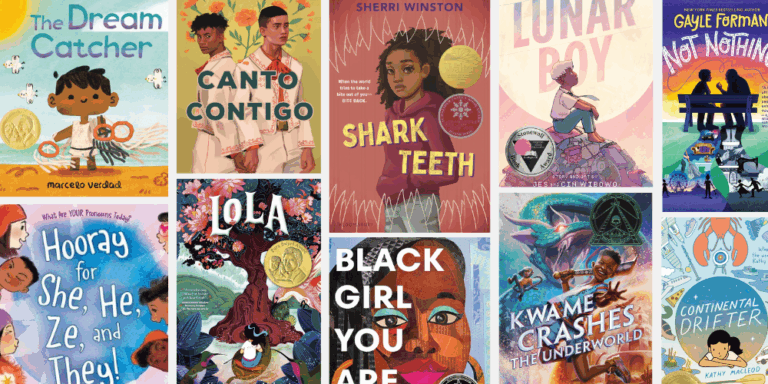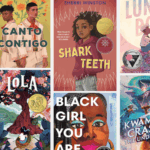Our Brains as Storytellers
Few situations give me the nervous sweats and worry than a difficult conversation. I don’t believe anyone seeks out conflict, but it can be nearly debilitating if there are too many unknowns and questions. Why did she react that way? What was the intent of that comment? Why does he keep acting like that around me?
The Curriculum and Instruction team from Teaching Channel attended a Dare to Lead training, which covered Dr. Brené Brown’s work on vulnerability, courage, and wholeheartedness. Dr. Brown holds a Ph.D. in Social Work, and is a licensed Social Worker. She’s a researcher and professor at the University of Texas-Houston, and the author of 5 New York Times bestsellers, including Daring Greatly, Dare to Lead, and Rising Strong. Her TED Talk about vulnerability has been viewed by over 43 million people, and she recently released Daring Classrooms—a (free!) teacher hub that includes the applications for the principles in her books.
The Dare to Lead training focused on habits and techniques, based on Brown’s research, that can improve the way we communicate and interact in our personal and professional lives. We learned about the Rumble, which is a way of working through difficult conversations or situations. One goal for a Rumble is to be curious about what may have caused an action or an unpleasant situation, and because we are human, sometimes we need to get vulnerable to arrive at an understanding. This is scary- and puts us in vulnerable positions- at risk of somehow being hurt.
But fear not – Dr. Brown gives us tools to prepare us for those conversations we have been avoiding or dreading by remaining curious, build trust, and honor perspective. One of many “rumble starters” – ways to begin difficult conversations – has made my interactions with others much more productive and to the point. It’s called, “The Story I Make Up.”
This rumble starter is my favorite because I can use it in so many areas of my life. “The Story I Make Up” is an admission to and sharing of what may be going on in your head. It’s designed to open the lines of communication beyond what you assume others are thinking; an opportunity to not only share your truth, but to check your emotional reactions if need be. If you have ever had an instance where you set yourself spinning because you didn’t know what the other person was thinking (and if this has never happened to you, I’d love to know your secret!), this one’s for you!
Here’s an example:
Renata and Tina are in an IEP meeting together, and as they are leaving, Renata looks at Tina and wishes her a good day. Tina replies, “Yeah, right…” and walks away.
Renata stands there wondering what happened, and her brain begins to spin up all sorts of possibilities: Tina hates me. I said something to offend her. I threw her under the bus without knowing it. I forgot it’s her birthday. I teased her about her goofy looking dog once and she remembered that. She’s going to have me fired.
Our brains make up stories to help us make sense of the world; in fact, once the brain has created a “story” to understand something that has happened, the limbic system activates a reward – dopamine – to allow us to move forward with our lives. It doesn’t matter if the story is true or weird or completely false…what matters is that our brains are alerting us that we have made sense of the situation.
Nothing good can come of this spinning, so Renata makes an appointment to see Tina.
“Hey Tina- so, when I wished you a good day today, you said, “yeah right,” and walked away. The story I am making up is that I inadvertently did something in the meeting to offend you, and I wish I knew what it was so I can make it right.”
Tina responds:
“Oh-yeah…Jim was being so negative in that meeting that I was ready to explode. He was talking about one of the kids on my caseload and was being SO unprofessional! He didn’t care how he was coming across, and he used the meeting to air his grievances. My reaction wasn’t about you- sorry about that.”
Just like that- an even-handed conversation about a misperception. The spinning can cease. It won’t always work that way. Sometimes approaching a difficult conversation results in just that: a difficult conversation.
I also use “The Story I Make Up,” with my husband so we can let each other know our respective thoughts, which has allowed us to be even more comfortable about speaking our truth:
- “The story I am making up is that you don’t think I am helping out enough.”
- “I am making up this storythat I disappoint you with how I am handling our money.”
- “The story I’m telling myself is that my concern about the kids wasn’t worth a second thought.”
- “I’ve got this story in my head that you don’t like the dog, because you never have a positive word to say about her.”(not all stories have the same weight….)
Parents might benefit too (obviously, if kiddos learn the skill):
- “Emily, the story I am telling myself is that I said or did something to upset you, because you are snapping at me right now and slamming things around. Can you help me understand how I should react or help?”
- “Jason, the story I am telling myself is that you ate all this candy without asking because you don’t care about the rules or the consequences in this house. I need to know if that’s the case, so we can work together to find a solution for both of us.”
Consider how students might use this to solve their conflicts; modeling this technique can teach an alternative to avoidance and aggression, along with colleagues.
Children can use this technique too- for all sorts of interactions*:
- “Mom, the story I am telling myself is that you didn’t give me a hug today like you usually do because I made you upset about something.”
- “Mrs. Smith, the story I am telling myself is that you don’t call on me because I got an answer wrong about a month ago, and you don’t want to take another chance that I would be wrong.”
- “Henry, the story I am telling myself is that you don’t like me for some reason, because you don’t say hi to me in the halls and when we are at our lockers. I thought we were friends.”
*As you can surmise, all of this takes a great deal of courage and bravery – both of which take lots of practice.*
“The Story I Make Up” allows us to be curious and open-minded instead of spinning and overreacting, which can only help in clarifying our communication. I also noticed that this phrase keeps me from self-deprecating when I need to clarify something. Instead of saying, “I probably screwed this up, but here’s how I am seeing this…” I can own what my brain is doing, and ask for explanations.
It’s legit! It’s science! And it’s a lifelong tool that can benefit anyone.
Teaching Channel offers an outstanding (if we do say so ourselves) course anchored by Dr. Brené Brown’s bestselling book, Daring Greatly, that strives to share ways teachers can use vulnerability in the classroom for positive results. Check out Course 5101: The Practice and Power of Vulnerability in the Classroom.








